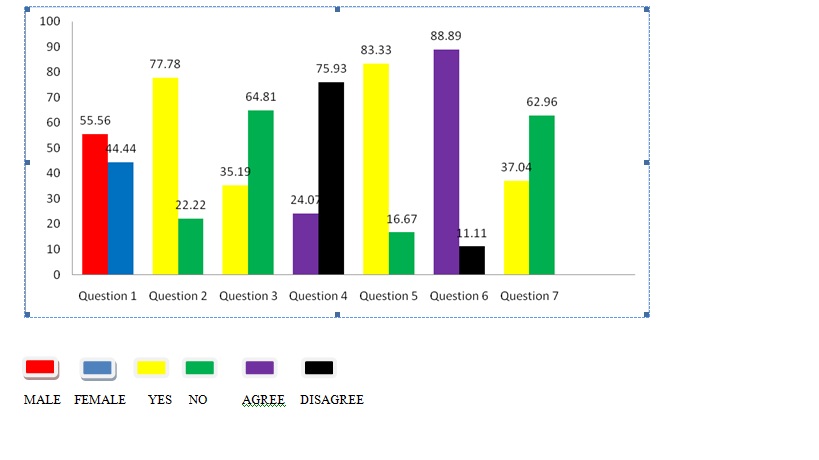Make sure everything you do results in actionable information. One of the big survey marketing mistakes is asking questions no cares to know the answer.
Honestly, I would love to stop that here. That alone is all you need to keep in mind moving forward. But a picture with color is so much easier to imagine. Here are a few examples of actionable information that should clarify this discussion.
The Survey Question
 You’ve surely taken surveys that ask your age, income and marital status – have you not? I have too, several times and I’m eager to give that information. But I wonder, and I hope you do too, what are they doing with that information?
You’ve surely taken surveys that ask your age, income and marital status – have you not? I have too, several times and I’m eager to give that information. But I wonder, and I hope you do too, what are they doing with that information?
When you ask survey questions to your audience, role play the answers that might get returned. Suppose 65% said they were male and 35% female? What would you do? Suppose it was 50/50 or the reverse, would that change your marketing in any way?
One of the biggest survey marketing mistakes is failing to understand the value of the information.
What does the information reflect?
Let’s assume that the audience response was 65% male, you then have to ask yourself why that is the case? Was the marketing geared toward a male audience? Were you marketing on radio stations that cater heavily to male listeners? Does the solution to your product benefit males more than females? Or did you attract males prospects as often as female prospects and there’s something about your sales page or sales page video that specifically appealed to them.
Your audience is ALWAYS a product of your marketing. Even when you have the money to blanket the same message across the globe, like Coca-Cola and Hershey’s do, their customers are still a reflection of their marketing. So asking the questions will only confirm the past result of marketing. But is that actionable? Male vs Female is only part of the information.
Demographics aid information
Suppose your product is a video on strengthening the kegel muscles for incontinence sufferers and you’re given this 65% male information? Is it actionable? Some would argue that you should revamp the advertising and include more references to male incontinence, that you should start shooting for an older demographic, and that you increase marketing dollars in those areas immediately. What the male/female question doesn’t tell you is the reason the customer became the buyer – that’s the actionable information.
In the case of kegels, men in their 30’s, 40’s and 50′ are often searching for male performance aids, not incontinence help. And kegels are the answer to that query. So you must ask yourself is your business set-up to cater to the one-time male performance help visitor? Does it pay to attract more of them?
Demographics aid information – they aren’t information by themselves. Don’t paint yourself into a corner making the same survey marketing mistakes everyone else makes. Review every possible answer before asking the question.
Timing is telling
Suppose you have a continuity product that charges the customer a monthly fee. Wouldn’t it be nice to know if the customer was on month 1 or month 7 when they answered your survey questions? Can you imagine learning that your customer base was 65% male. What if you also learned that 20% of your customers continued using your service for 12 months?
Without parsing your audience database by the number of times they’ve taken the product, you will not have actionable information. Because in the long run, you don’t really care if 65% of your first time customers are male. What you really want to know are the demographics and particulars of those that have taken the product for 12 months. When you can find that common denominator – then you can take action with your marketing plan.
Without knowing anything other than the male vs female data, and the number of people who have been using the program for the entire year data, you end up with no actionable information. All you have is a bar graph with pretty colors. Those are the kind of survey marketing mistakes you’ll see in corporate year-end reports, but they are truly a waste for the small business.

The Whole Picture
Whether it is survey information or analytics on your website, ask yourself what you’re going to do depending on the answer. If you can’t think of anything, don’t waste your time collecting the information. Otherwise make sure you ask the necessary follow-up questions to turn that information into something you can take action on.
Specifically in the case of survey software, make sure the software can be set-up a variety of different ways. For instance if you ask a yes/no question to start off the survey, make sure you can ask different questions to the people who respond “no” then you do the ones who respond “yes”. Many don’t have that functionality. (Survey Monkey is one that does)
What are you going to do if you find out that 17.8% of your web traffic comes from Facebook? What if it is 81.2%? What if 23% of your visitors are between the ages of 35-39? What if that number is 6%?
Make sure you’re taking the steps necessary to garner actionable information at every step of the way.
